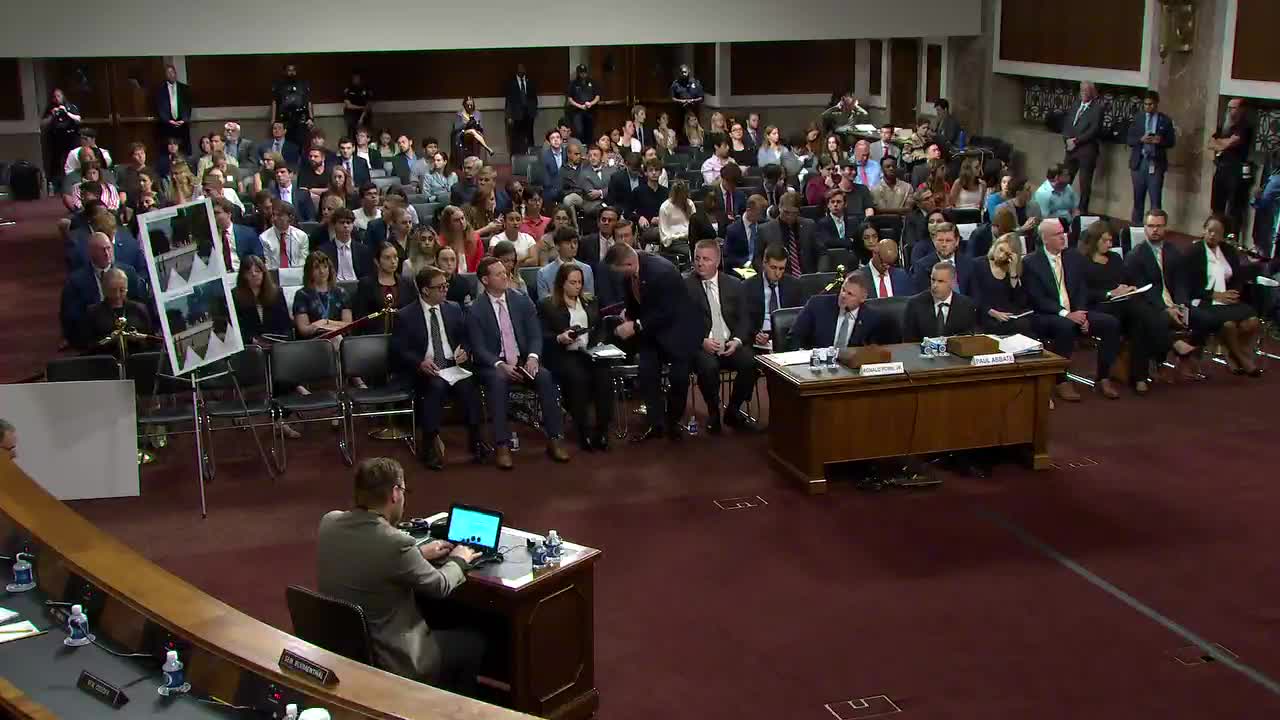Secret Service faces intense scrutiny over security failures
July 30, 2024 | Homeland Security and Governmental Affairs: Senate Committee, Standing Committees - House & Senate, Congressional Hearings Compilation

This article was created by AI summarizing key points discussed. AI makes mistakes, so for full details and context, please refer to the video of the full meeting. Please report any errors so we can fix them. Report an error »

In a tense government meeting, officials faced intense scrutiny over the Secret Service's security failures during a recent assassination attempt on a former president. Key discussions centered on the absence of a counter sniper on a nearby roof, which provided a clear line of sight to the former president during the incident. Senators questioned the decision-making process that led to this oversight, with one senator demanding accountability for the agents involved.
The director of the Secret Service defended the agency's protocols, stating that the decision to exclude the building from the security perimeter was part of a broader operational strategy. However, senators expressed frustration over the lack of immediate accountability, particularly in light of the tragic outcome, which included the shooting of the former president and injuries to others.
Senators pressed for clarity on who made the critical decisions regarding security measures, including the denial of additional resources requested by the former president's team in the lead-up to the event. The director denied personal involvement in denying these requests, attributing the decisions to a complex bureaucratic process.
The meeting also highlighted concerns about the agency's internal culture and operational effectiveness, with senators pointing to a high departure rate among agents and a perceived lack of trust in leadership. As the investigation continues, lawmakers emphasized the need for a thorough review of the Secret Service's protocols and accountability measures to prevent future security failures.
The director of the Secret Service defended the agency's protocols, stating that the decision to exclude the building from the security perimeter was part of a broader operational strategy. However, senators expressed frustration over the lack of immediate accountability, particularly in light of the tragic outcome, which included the shooting of the former president and injuries to others.
Senators pressed for clarity on who made the critical decisions regarding security measures, including the denial of additional resources requested by the former president's team in the lead-up to the event. The director denied personal involvement in denying these requests, attributing the decisions to a complex bureaucratic process.
The meeting also highlighted concerns about the agency's internal culture and operational effectiveness, with senators pointing to a high departure rate among agents and a perceived lack of trust in leadership. As the investigation continues, lawmakers emphasized the need for a thorough review of the Secret Service's protocols and accountability measures to prevent future security failures.
View full meeting
This article is based on a recent meeting—watch the full video and explore the complete transcript for deeper insights into the discussion.
View full meeting